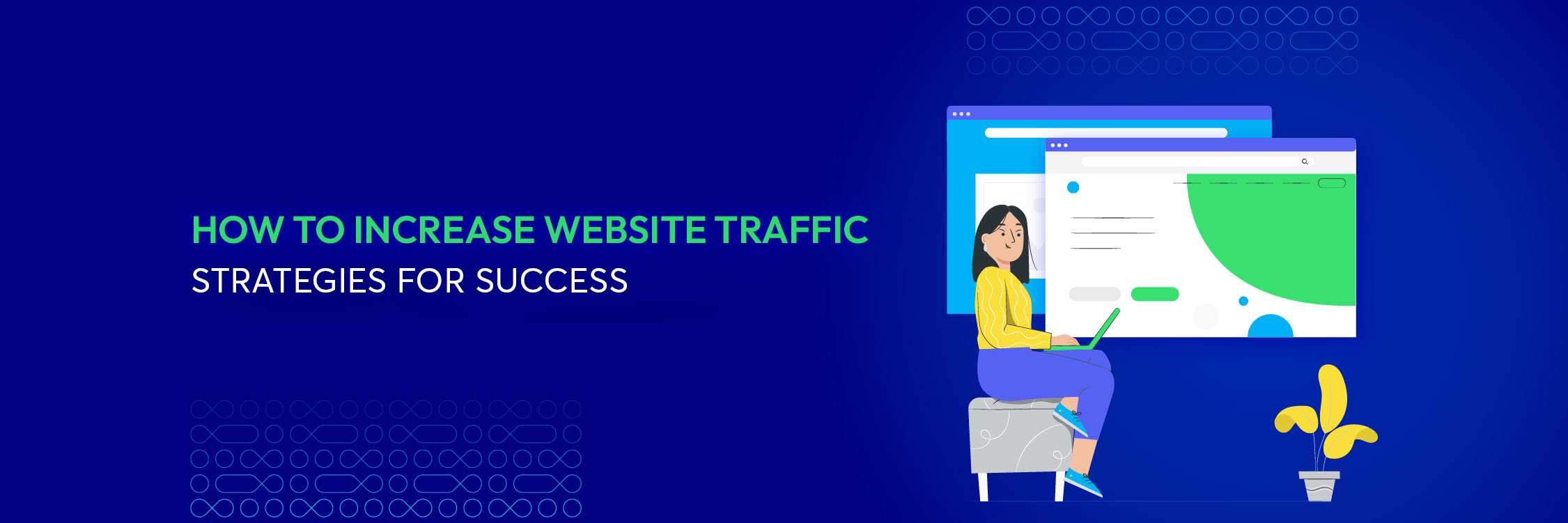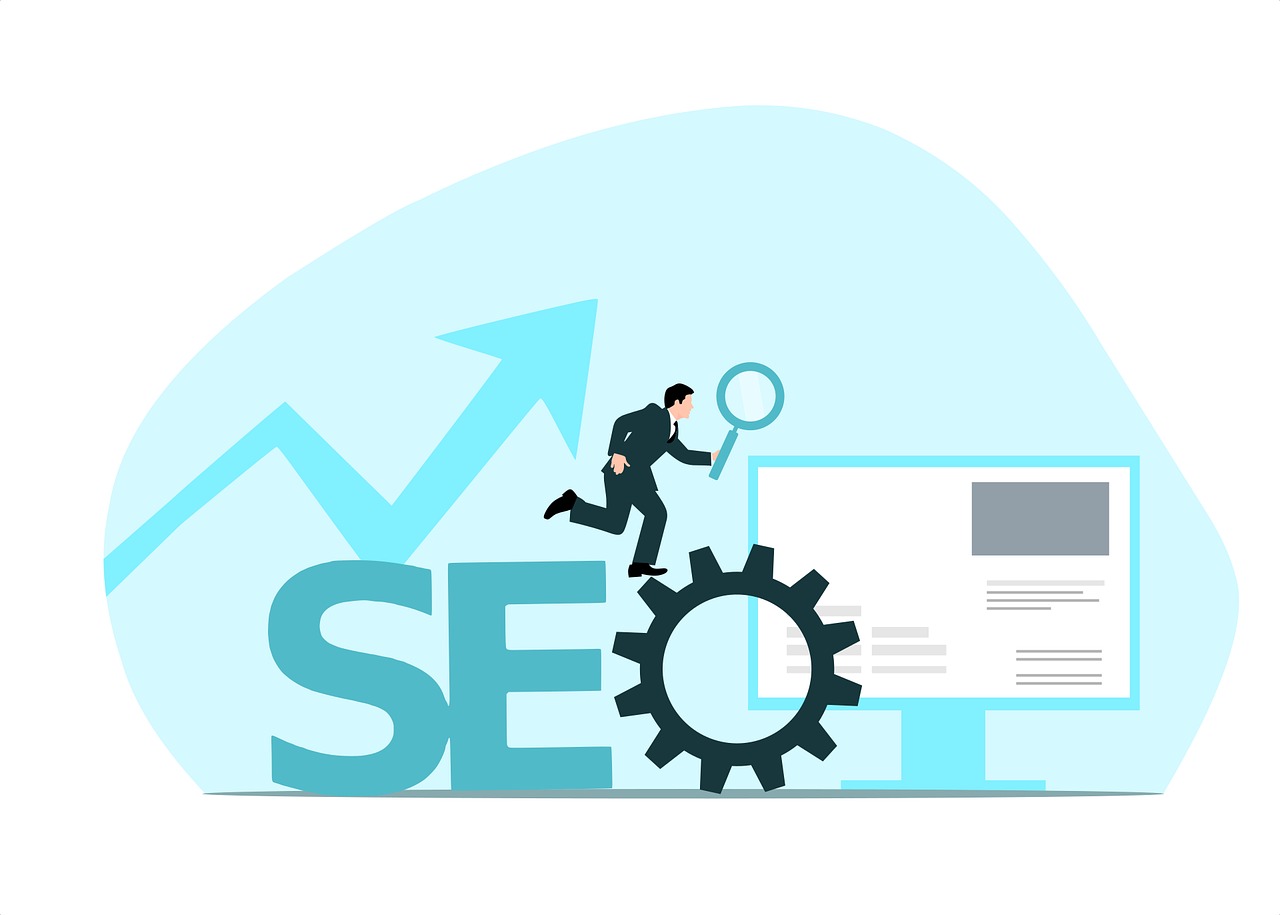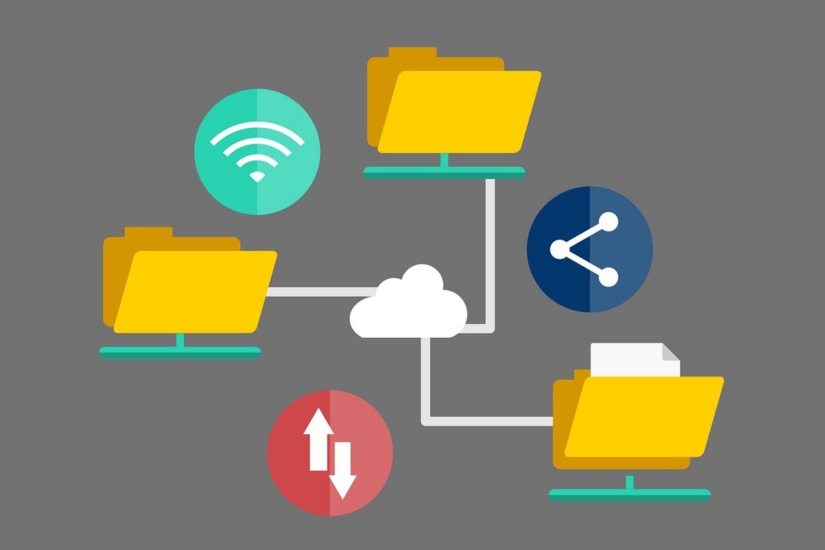How To Increase Website Traffic: Strategies For Success
Summer Nguyen | 08-21-2023

Are you looking to boost the visibility and reach of your website?
If so, you’ve come to the right place! In this article, we’ll explore a variety of strategies on how to increase website traffic effectively. Whether you are an entrepreneur, blogger, or small business owner, understanding how to drive more visitors to your website is crucial for success in today’s digital world.
With millions of sites competing for attention online, simply having a well-designed website is not enough. To stand out from the crowd and attract potential customers or readers, you should implement proven strategies that drive targeted traffic to your site.
Following these valuable strategies, you can significantly improve your website’s visibility and engagement and ultimately achieve your desired goals. So, if you’re ready to skyrocket your online presence, read on!
Why Is Website Traffic Important?
Website traffic is of paramount importance for various reasons.
Firstly, it is a vital indicator of a website’s popularity and reach. The higher the traffic volume a website receives, the more it signifies that it attracts visitors and generates interest.
Furthermore, website traffic is directly linked to the potential for conversions and revenue generation. Increased traffic means a larger pool of potential customers, enhancing the chances of achieving sales, subscriptions, or desired actions.
Moreover, website traffic plays a crucial role in improving search engine rankings. Search engines often consider traffic volume and engagement metrics critical in determining a website’s relevance and authority, affecting its visibility in search results.
Additionally, a consistent flow of visitors provides significant observations regarding user behavior, preferences, and trends. By analyzing this data, proprietors of websites can make well-informed choices to enhance their content, improve user experience, and refine their marketing tactics.
Benefits Of Increasing Website Traffic
Increasing website traffic can benefit your online presence and overall business success. Here are some key benefits of increasing website traffic:

-
Enhanced visibility: More website traffic means more people are discovering your website, leading to increased brand exposure and visibility in the online space.
-
Greater audience reach: Increased website traffic allows you to connect with a larger audience, potentially expanding your customer base and increasing your chances of generating leads or sales.
-
Improved search engine rankings: Higher website traffic signals search engines that your site is common and relevant, which can positively impact your organic search rankings and increase your online presence.
-
Increased brand authority: A well-trafficked website can establish your brand as an authority in your industry, building high trust and credibility among your target audience.
-
Enhanced customer engagement: More website visitors mean more opportunities for engagement, such as comments, shares, and interactions, fostering a sense of community and facilitating customer relationship building.
-
Higher conversion rates: With increased website traffic, you have a greater pool of potential customers to convert, leading to improved conversion rates and, ultimately, more sales or desired actions.
-
Opportunities for data analysis: Increased website traffic provides more data for analysis, allowing you to gain insights into user behavior, preferences, and trends, which can inform your marketing strategies and website optimization efforts.
-
Potential for monetization: Higher website traffic opens up avenues for monetization, such as advertising, affiliate marketing, or sponsored content, enabling you to generate additional revenue streams.
-
Competitive advantage: By driving more traffic to your website, you can outperform your competitors, establish a stronger online presence, and stay ahead in the digital landscape.
-
Opportunities for partnerships and collaborations: With increased visibility and authority, you may attract potential partners, collaborators, or influencers interested in collaborating with your brand, leading to mutually beneficial relationships.
Understanding Your Current Traffic
Analyzing Website Traffic Metrics
Analyzing website traffic metrics is essential to gain insights into the performance of your website and understand how users interact with it. Here are some key metrics to consider:
-
Total visits: This metric indicates the overall number of visits or sessions on your website during a specific period.
-
Pageviews: Pageviews refer to the number of times individual pages on your website have been viewed. It helps you understand which pages are popular and engaging for users.
-
Unique visitors: This metric represents the number of individuals visiting your website. It provides insights into the reach and size of your audience.
-
Bounce rate: It indicates the percentage of visitors who leave your website after viewing only one page. A high bounce rate might indicate a lack of engagement or relevant content.
-
Average session duration: This metric reveals the average time visitors spend on your site per session. It helps measure user engagement and the effectiveness of your content.
Identifying Traffic Sources

Understanding where your website traffic comes from is crucial for optimizing your marketing efforts. Here are some common traffic sources:
-
Direct traffic: Visitors who directly enter your website URL into their browsers or have your website bookmarked.
-
Organic search: Traffic comes from search engines when users find your website through relevant search queries.
-
Referral traffic: Visitors who arrive on your website through external links from other websites, such as social media platforms, blogs, or partner sites.
-
Paid advertising: Traffic generated through paid advertising campaigns, such as pay-per-click (PPC) ads, display ads, or sponsored content.
-
Social media: Traffic that originates from various social media platforms where you have a presence and share content.
Assessing User Behavior And Engagement
Understanding how users behave on your site and their level of engagement helps you optimize your site’s user experience. Here are some important factors to consider:
-
Conversion rate: The conversion rate measures the percentage of visitors who complete a desired action, such as purchasing, filling out a form, or subscribing to a newsletter.
-
Click-through rate (CTR): CTR is the ratio of users who click on a link or element, such as a call-to-action button or a banner ad, compared to the total number of impressions or views.
-
Exit pages: Exit pages indicate visitors’ last pages before leaving your website. Identifying high exit rates on specific pages can highlight areas needing improvement.
-
User flow: User flow visualizes the path users take through your website, showing how they navigate from page to page. This helps identify popular paths and potential bottlenecks.
-
Engagement metrics: Metrics such as time on page, number of interactions (comments, shares, likes), and scroll depth provide insights into user engagement and interest in your content.
19+ Strategies On How To Increase Website Traffic Effectively
Is this the part you look forward to the most? Let’s discover a variety of strategies on how to increase website traffic effectively below.
1. Create High-Quality Content
High-quality, valuable content is the cornerstone of driving traffic to your website. This means producing articles, blog posts, videos, infographics, or any other form of informative, engaging, and relevant content to your target audience.
By consistently delivering valuable content, you establish your website as a go-to resource and encourage visitors to return and share your content with others, thereby increasing traffic organically.
2. Optimize For Search Engines
Search engine optimization (SEO) is necessary in increasing website traffic.

Conducting keyword research to identify the search terms/phrases your target audience is using. Incorporate these keywords naturally into your content, headlines, meta tags, and URLs.
Optimize your website’s loading speed, ensure mobile responsiveness, and improve the overall user experience to enhance search engine rankings and attract organic traffic.
3. Guest Blogging
Guest blogging involves writing articles or blog posts for other websites in your industry. By contributing high-quality content to reputable sites, you can reach their existing audience and gain exposure for your website.
Typically, you are allowed to include a brief author bio with a link to your site. This drives referral traffic and helps improve your site’s authority and credibility in the eyes of search engines.
4. Social Media Promotion
Social media platforms have become robust channels for promoting content, building brand awareness, and driving website traffic.
To effectively establish your presence online, it is advisable to construct profiles on widely-used platforms like Facebook, Twitter, Instagram, LinkedIn, and Pinterest. Ensure to consistently share your content, actively interact with your audience, join meaningful discussions, and foster social sharing.
By leveraging the viral nature of social media, you can amplify your reach, attract new followers, and direct a steady stream of traffic to your website.
5. Influencer Collaborations
Influencers and industry experts with a significant following can be valuable allies in driving traffic to your website.
Identify influential individuals within your niche or industry and establish partnerships or collaborations with them. This can involve co-creating content, featuring each other in podcasts or interviews, hosting joint webinars or live events, or engaging in cross-promotions.
When influencers promote your website or share your content with their followers, it exposes your brand to a wider audience likely to be interested in your offerings, resulting in increased website traffic and brand visibility.
6. Email Marketing
Building an email list lets you directly communicate with your audience and drive traffic to your site.

Offer valuable incentives such as exclusive content, discounts, or free resources in exchange for email subscriptions. Send regular newsletters, updates, or promotional emails to your subscribers, providing them with relevant content and directing them back to your website.
Email marketing is a robust tool for nurturing relationships, increasing repeat visits, and generating traffic.
7. Content Syndication
Content syndication involves republishing your content on third-party platforms beyond your website. Websites like Medium, LinkedIn Pulse, or industry-specific platforms accept syndicated content, exposing it to new audiences.
While publishing on these platforms, ensure that you include a canonical tag or a link to your website’s original content. This practice expands your reach, attracts new visitors, and helps build backlinks that can positively impact your website’s search engine rankings.
8. Video Marketing
Videos have become increasingly popular and have the potential to drive significant traffic to your site. Create engaging and informative videos related to your industry or niche and publish them on platforms like YouTube, Vimeo, or social media.
Optimize your video titles, descriptions, and tags with relevant keywords to enhance discoverability. Embed these videos on your website to keep visitors engaged and encourage them to explore further.
Video marketing helps increase brand visibility, build trust, and drive traffic to your website.
9. Online Advertising
Paid online advertising is a powerful method for attracting targeted traffic to your website. Various platforms, including Google Ads, social media ads (such as Facebook and Instagram Ads), and display advertising networks, enable you to create targeted campaigns based on demographics, interests, or search intent.
Set a budget, identify your target audience, and create compelling ad copy and visuals that drive users to click through to your website. Online advertising can quickly generate traffic, especially when complemented with proper targeting and optimization.
10. Participate In Online Communities
Engaging with online communities relevant to your industry or niche can help increase website traffic.
Join forums, groups, or communities where your target audience congregates and actively participates in discussions. Offer valuable insights, answer questions, and provide solutions to problems.
By establishing yourself as an expert and providing value, you gain credibility and trust, which can lead to increased traffic as community members visit your website to learn more or seek additional resources.
11. Social Bookmarking
Social bookmarking websites like Reddit, Digg, or StumbleUpon can be valuable traffic sources. Submitting your content to these platforms can expose it to a large user base with specific interests.
However, it’s essential to understand the rules and guidelines of each platform and engage genuinely with the community. Share your content strategically and avoid self-promotion without adding value. If done correctly, social bookmarking can generate significant traffic and help your content go viral.
12. Optimize For Mobile
Optimizing your website for mobile responsiveness is crucial as the number of users accessing the internet through mobile devices continues to grow.

Ensure your website is mobile-friendly, loads quickly, and provides a seamless user experience across different screen sizes and devices.
Mobile optimization enhances user satisfaction and engagement and positively impacts your website’s search engine rankings. Search engines prioritize mobile-friendly sites in their results, increasing visibility and organic traffic to your website.
13. Improve Website Speed
Website speed is a critical factor in user experience and search engine rankings. Optimize your website’s performance by compressing images, minifying code, leveraging browser caching, and using content delivery networks (CDNs).
A fast-loading website improves user satisfaction, reduces bounce rates, and encourages visitors to explore further. Additionally, search engines prioritize fast websites, leading to better rankings and increased organic traffic.
14. Implement internal linking
Internal linking is a powerful on-page SEO technique that links relevant pages or articles within your website.
Strategically interlinking your content improves website navigation, guides visitors to related or valuable resources, and distributes link equity. Internal linking helps search engines understand your site’s structure and hierarchy, making indexing and ranking your content easier.
Additionally, internal links encourage visitors to explore more of your website, leading to increased time on site, lower bounce rates, and improved traffic flow to different pages.
15. Start A Podcast
Podcasts have gained immense popularity, providing a unique opportunity to reach new visitors and drive traffic to your website.
Identify podcasts relevant to your industry or niche and reach out to the hosts as potential guests. Participate in interviews, share your expertise, and promote your website and content during the podcast episode.
Podcast listeners who resonate with your insights or find value in your recommendations will likely visit your website to learn more or access additional resources. This can result in increased traffic and exposure for your brand.
16. Use Catchy Headlines
Crafting catchy headlines is crucial for capturing users’ attention and enticing them to click through to your content.
Invest time and effort in creating compelling headlines that evoke curiosity, offer clear benefits, or trigger an emotional response. Incorporate relevant keywords and phrases while ensuring the headline accurately represents the content to avoid misleading users.
By optimizing your headlines for search engine results pages (SERPs) and social media feeds, you can increase click-through rates, attract more visitors, and drive traffic to your website.
17. Conduct Webinars Or Online Events
Hosting webinars, workshops, or online events on topics relevant to your audience can attract new visitors to your website.
Promote your events through various channels, including your website, social media, email marketing, and partnerships with influencers or industry peers. During these events, provide valuable insights, address attendees’ pain points, and showcase your expertise.
By delivering exceptional value, you establish credibility, nurture relationships, and drive traffic to your website.
18. Cross-Promotion With Other Websites
Collaborating with complementary websites or businesses allows you to tap into each other’s audiences and generate reciprocal traffic.
Identify partners with a similar target audience but offering non-competing products or services. Explore opportunities for cross-promotion, such as guest blogging, co-hosted webinars, joint giveaways, or social media shout-outs.
Cross-promotion exposes your brand to new visitors who are likely to be interested in what you offer, resulting in increased traffic.
19. Utilize Online Directories
Submitting your site to relevant online directories and listings can boost your online visibility and attract targeted traffic.
Look for directories specific to your industry, niche, or location. Ensure that the directories are reputable, have good domain authority, and allow you to include a link back to your website.

Listing your website in relevant directories improves your website’s visibility and helps with backlink building and driving traffic from directory visitors.
20. Leverage User-Generated Content
Encouraging your audience to create and share content related to your brand, products, or services can significantly increase website traffic. This can include customer reviews, testimonials, social media mentions, or user-generated photos and videos.
Create branded hashtags, run contests, or incentivize users to generate content. Users sharing their experiences and content enhances your brand’s authenticity and acts as social proof, attracting new visitors to your website.
21. Offer Free Resources Or Downloads
Creating valuable resources such as e-books, templates, guides, or tools can effectively attract and retain visitors to your website.
Offer these resources as free downloads, requiring users to provide their email addresses or complete a form to access them. Promote these resources through various channels, including your website, social media platforms, guest blogs, and email marketing.
By providing valuable and practical resources for free, you capture leads and establish yourself as an authority in your field. This can increase traffic as users visit your website to access these resources and explore more of your content.
22. Analyze And Optimize
Continuous analysis and optimization are essential for improving website traffic over time.
Use Google Analytics to track and measure metrics such as traffic sources, user behavior, conversion rates, and engagement.
Gain insights into which strategies drive the most traffic, which content performs well, and which areas need improvement. Experiment with different techniques, test variations, and refine your approach based on your collected data.
By consistently optimizing your website and implementing effective marketing strategies, you can make well-informed decisions, attract targeted traffic, and achieve long-term success in increasing website traffic efficiently.
Conclusion
In conclusion, increasing website traffic is crucial to any successful online presence. Now you have your answer about how to increase website traffic. By implementing the strategies above, you can effectively drive more visitors to your website.
It is essential to continuously analyze and adjust these strategies based on data and feedback to ensure ongoing growth. Remember, increasing website traffic takes time and patience, but consistent effort and dedication will make the results worth it. Start implementing these techniques today and watch your website traffic soar!






![Top 20+ Must-have Shopify Apps for 2025 [Free & Paid] - Mageplaza](https://cdn2.mageplaza.com/media/blog/must-have-shopify-apps/top-must-have-shopify-apps.png)
![[2025 Updates] Top 10+ Upsell Apps for Shopify - Mageplaza](https://cdn2.mageplaza.com/media/blog/best-upsell-shopify-app/cover.png)